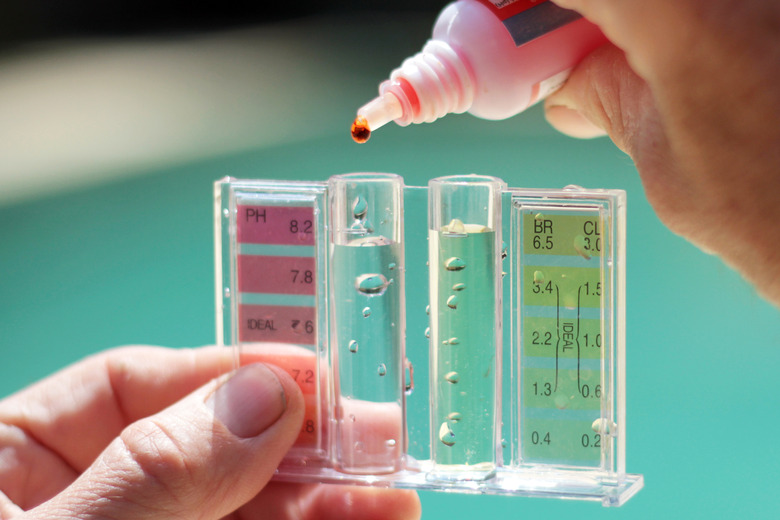What Is The pH Of Distilled Water?
The pH of a solution is a measure of the concentration of hydrogen ions. The term itself stands loosely for the "power of hydrogen," and it's the negative logarithm of the actual hydrogen ion concentration. This means that hydrogen ion concentration decreases with increasing pH and that a difference of one pH unit signifies a tenfold variation in hydrogen ion concentration. The pH value can vary from 0 to 14. Solutions with a pH between 0 and 7 are acidic, while those with a pH between 7 and 14 are basic. Pure distilled water should be neutral with a pH of 7, but because it absorbs carbon dioxide from the atmosphere, it's actually slightly acidic with a pH of 5.8.
TL;DR (Too Long; Didn't Read)
The pH of distilled water immediately after distillation is 7, but within hours after distillation, it has absorbed carbon dioxide from the atmosphere and become acidic with a pH of 5.8.
Acids and Bases
Acids and Bases
It makes sense to measure pH in water solutions; liquids such as mineral oil or turpentine don't have a pH. In the Bronsted-Lowry Theory of acids and bases, an acid is a compound that releases free protons in water, and a base is one that accepts protons. A proton is nothing other than the nucleus of a hydrogen atom. Strong acids, such as hydrochloric acid (HCl), dramatically decrease the pH of a solution, while strong bases, such as sodium hydroxide (NaOH), dramatically increase it. Acids and bases neutralize one another in solution and combine to form a salt. For example, if you mix HCl with NaOH in solution, you get NaCl, which is table salt.
Distilled Water Should Be pH Neutral
Distilled Water Should Be pH Neutral
The process for distillation involves boiling the water, allowing the steam to condense in a tube and collecting the condensation in a container. There may be many substances dissolved in the water, and some of them may vaporize along with the water, but salts and other solid solutes are left behind. Sophisticated distillation techniques can eliminate even the volatile solutes, and if you employ one of these, the collected condensate should be free of any solutes, and you would expect its pH to be 7. If you measure the pH immediately after distillation, that's probably what you'll find, but it soon changes.
Pure Water Is Slightly Acidic
Pure Water Is Slightly Acidic
The pH of pure water is around 5.8, which makes it acidic. The reason is that water absorbs carbon dioxide and continues to do so until it comes into equilibrium with the atmosphere. In solution, carbon dioxide reacts with water to produce carbonic acid, which in turn releases hydronium ions into solution – which is equivalent to releasing free hydrogen ions.
2H20 + CO2 –> H2O + H2CO3 (carbonic acid) –> H3O+ (hydronium) + HCO3- (bicarbonate ions)
It takes about two hours for a sample of distilled water to absorb all the carbon dioxide it can from the atmosphere and achieve its final pH.
Cite This Article
MLA
Deziel, Chris. "What Is The pH Of Distilled Water?" sciencing.com, https://www.sciencing.com/ph-distilled-water-4623914/. 16 April 2018.
APA
Deziel, Chris. (2018, April 16). What Is The pH Of Distilled Water?. sciencing.com. Retrieved from https://www.sciencing.com/ph-distilled-water-4623914/
Chicago
Deziel, Chris. What Is The pH Of Distilled Water? last modified March 24, 2022. https://www.sciencing.com/ph-distilled-water-4623914/
